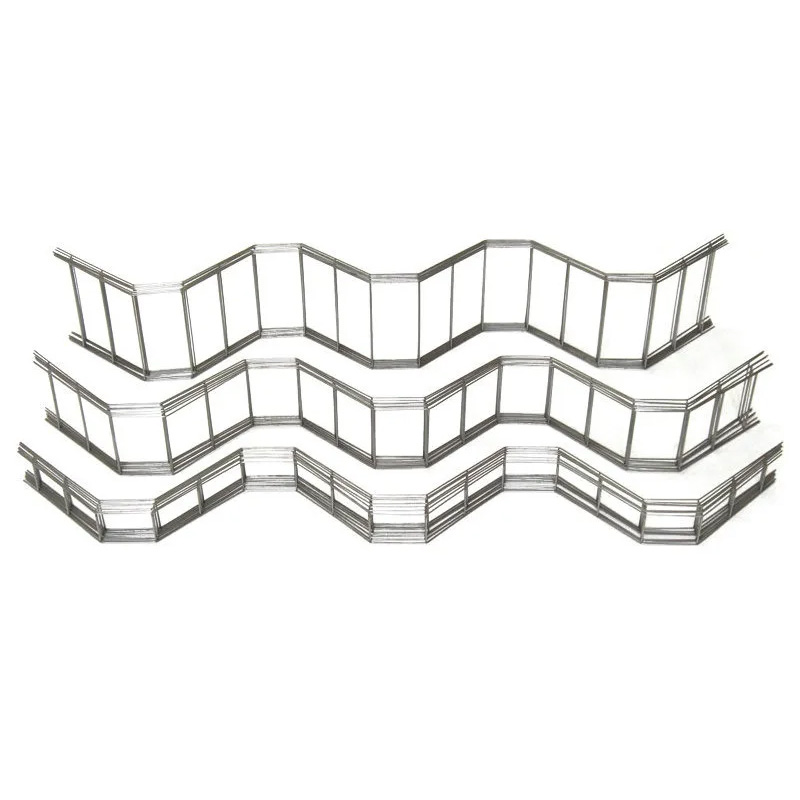
- Mobile Phone
- +8613931874955
- sales@cntcmetal.com
brick veneer anchoring systems
Understanding Brick Veneer Anchoring Systems
Brick veneer is a popular choice for many building projects due to its aesthetic appeal and durability. However, the structural integrity of brick veneer can be compromised if it is not properly anchored to the underlying framework. This is where brick veneer anchoring systems play a vital role. In this article, we will discuss what these systems are, their importance, and various types available in the market.
What is Brick Veneer?
Brick veneer is a construction method where a single layer of brick is applied to the exterior of a building, functioning as a facing material rather than a structural component. This method allows for a traditional brick appearance while providing some thermal and acoustic insulation. The bricks themselves are not load-bearing; hence, they require a stable structure beneath them to maintain their integrity.
Importance of Anchoring Systems
The primary purpose of anchoring systems is to secure the brick veneer to the structure of the building, preventing any potential movement or distress due to environmental factors such as wind, seismic activity, or settling of the foundation. Without adequate anchoring, the veneer could crack, separate, or fall, posing safety risks to the occupants and the integrity of the building.
Moreover, proper anchoring systems can mitigate moisture penetration, which is a significant concern for brick veneer facades. Water trapped behind the veneer can lead to mold, mildew, and deterioration of both the brick and the underlying materials. Therefore, an anchoring system is crucial not only for stability but also for the overall longevity of the building.
Types of Anchoring Systems
brick veneer anchoring systems

1. Horizontal Anchors These are typically placed at regular intervals along the height of the wall. They provide lateral support and help distribute load evenly. Horizontal anchors can either be continuous steel straps or individual metal anchors that secure the veneer to the sheathing of the wall.
2. Vertical Anchors While horizontal anchors support the lateral aspect, vertical anchors are essential for weight bearing. They are placed at the base of the brick veneer and provide additional strength against downward forces such as gravity, especially when the wall is subjected to heavy loads.
3. Shear Tie Systems Shear ties are essential for resisting shear forces that can occur during various loads. These ties help prevent lateral movement and are crucial in earthquake-prone regions. They connect the brick veneer to the structural framework, ensuring a stable connection that can withstand shifting forces.
4. Brick Ties Often made from galvanized steel, brick ties are commonly used to connect brick veneer to the backup wall. They come in various designs, including ladder ties and triangular ties, offering flexibility in application depending on the wall design. Brick ties play a vital role in maintaining an appropriate distance between the veneer and the structure, allowing for ventilation and moisture management.
5. Weep Holes and Flashing While not anchors per se, these elements are critical in a complete anchoring system. Weep holes allow moisture to escape from behind the veneer, preventing water damage. Flashing can direct water away from the veneer and prevent infiltration. Together, they work in conjunction with anchoring systems to ensure a resilient and durable brick veneer structure.
Conclusion
The importance of a reliable brick veneer anchoring system cannot be overstated. It is essential for both the aesthetic longevity and structural integrity of the building. By employing a combination of horizontal and vertical anchors, shear tie systems, and proper moisture management features, builders can ensure that the brick veneer remains securely attached and resistant to the various forces it may encounter. As construction techniques advance, ongoing education and adherence to best practices regarding brick veneer anchoring will remain integral to effective building design and safety. Properly executed, these systems can provide a timeless feel to a structure while ensuring the safety and security of all who occupy it.
share:
-
Why Sacrificial Formwork Is Redefining Underground ConstructionNewsJun.06,2025
-
The Structural Dynamics of Modern Concrete: How Snake Spacers Revolutionize Flexible ReinforcementNewsJun.06,2025
-
Snake Spacers Smart-Lock Concrete Reinforcement with Surgical PrecisionNewsJun.06,2025
-
Snake Spacers: Reinforcement Precision for Modern Concrete ProjectsNewsJun.06,2025
-
Snake Spacers Powering Concrete's Structural DNANewsJun.06,2025
-
Slither into Success: Snake Spacers' Precision Bite for Unbreakable ReinforcementNewsJun.06,2025
-
Sacrificial Formwork: Building Stronger, Faster, and Safer StructuresNewsJun.06,2025



















